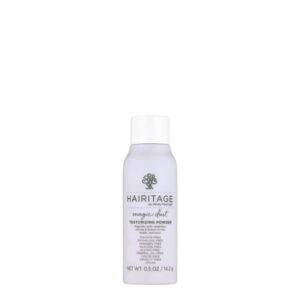
If you have a big family like mine then you know the struggle of shopping. Grocery shopping is long and shopping for everyday essentials is even longer. Everyone needs something different and hair products are no exception. Within our own family, we bridge the gap entirely between hair type. It was super frustrating going to the store and seeing my hair products were in one aisle while Paisley and Dax’s were in another aisle. I bet you’re asking, “Mindy why don’t you just get everyone the same shampoo and conditioner?” This is a BIG question for me to answer because everyone’s hair type is SO different.
What Are Hair Types?
Look at your natural hair. Is it Straight? Wavy? Curly? Coily? These are the 4 main hair types. According to Andre Walker, depending on the follicle shape on your head, your hair falls in these categories. If the follicle is more flat and oval it produces wavy/curly hair. If it’s more circular it produces straighter hair. Under each one of those categories, there are subcategories. This is based on your hair pattern – basically, the shape (or pattern) your hair makes. Other things that play into it are porosity, density, elasticity. I know it sounds complicated, but I promise after reading this it will make more sense!
Type 1

Type 1’s are your straight hair or some variation of straight! It can be medium straight hair or coarse straight hair, basically wet or dry your hair is just straight. When it comes to Type 1 most people just kind of mash them together, but there are subcategories. These subcategories are defined by whether your hair is thin, medium or coarse.
Hairitage products ideally for Type 1 hair: Outta My Hair Gentle Daily Shampoo, Held High Volume Conditioner, Tame the Mane Smoothing Conditioner, Light as a Feather Leave-in Conditioner, An Apple a Day Apple Cider Vinegar Hair Rinse, Take Your Vitamins Argan Oil, Mask-querade Transforming Hair Mask, Wiggle Room Flexible Hold Hairspray, Lazy Day Dry Shampoo, Magic Dust Texture Powder, To The Max Maximum Hold Styling Gel.
Type 2A, 2B, 2C

This is your wavy hair. Under type 2 there’s also type 2A, type 2B and 2C. The difference between 2A and 2C is based on how loose or how tight the curl can be. 2A may be virtually straight with just the slightest little bend. Whereas a 2C is going to be somebody that has more of a slight S shape to their hair.
Type 3A, 3B, 3C

One of the easier categories to identity is type 3 which is your curly hair girls. Type threes typically have more corkscrew curls. The difference between a 3A and a 3C is whether it’s a loose corkscrew curl or a tighter corkscrew curl.
Type 4A, 4B, 4C

Lastly, we have type 4. This is largely considered your coily/kinky type hair textures. When you get to the fours, the subcategories change a bit. 4A is also that corkscrew curl, but it’s very tight. As you move into 4B and 4C, the hair pattern is more of a zigzag shape. Some 4Cs don’t have a defined pattern even.
While looking at the chart you may notice that hair falls into more than one category, and that’s ok. This is really just a rough typing system. It’s very normal for most of us to have more than one specific type on our head. I have anywhere from a 2A all the way to a 2C on mine just where it grows differently. Like, underneath I have some piece that tends to be more straight. Where on top I might get a little more wave into my hair and that’s very normal. While Paisley can be a 4B and 4C.
Why is Hair Type so Important?
Now that we’ve learned the basics about hair types, take a look at your own hair. Does it feel oily, too dry, or does it seem brittle? You could be using the wrong products for your hair type. It’s Important to find products that work best with your natural hair type. Simply put, different products work on different hair types differently. The best part about Hairitage is that you can find products for all hair types or texture! It’s always been my dream to create a line where people can find all of their hair needs in one place on the shelf, for an affordable price.
Check out what products I use on my hair here.
*Many factors can change the color and texture of hair throughout your lifetime, including: stress, chemical hair treatments (relaxers / perms), heat styling, genetics, aging, medical conditions, puberty, illness, and pregnancy!








